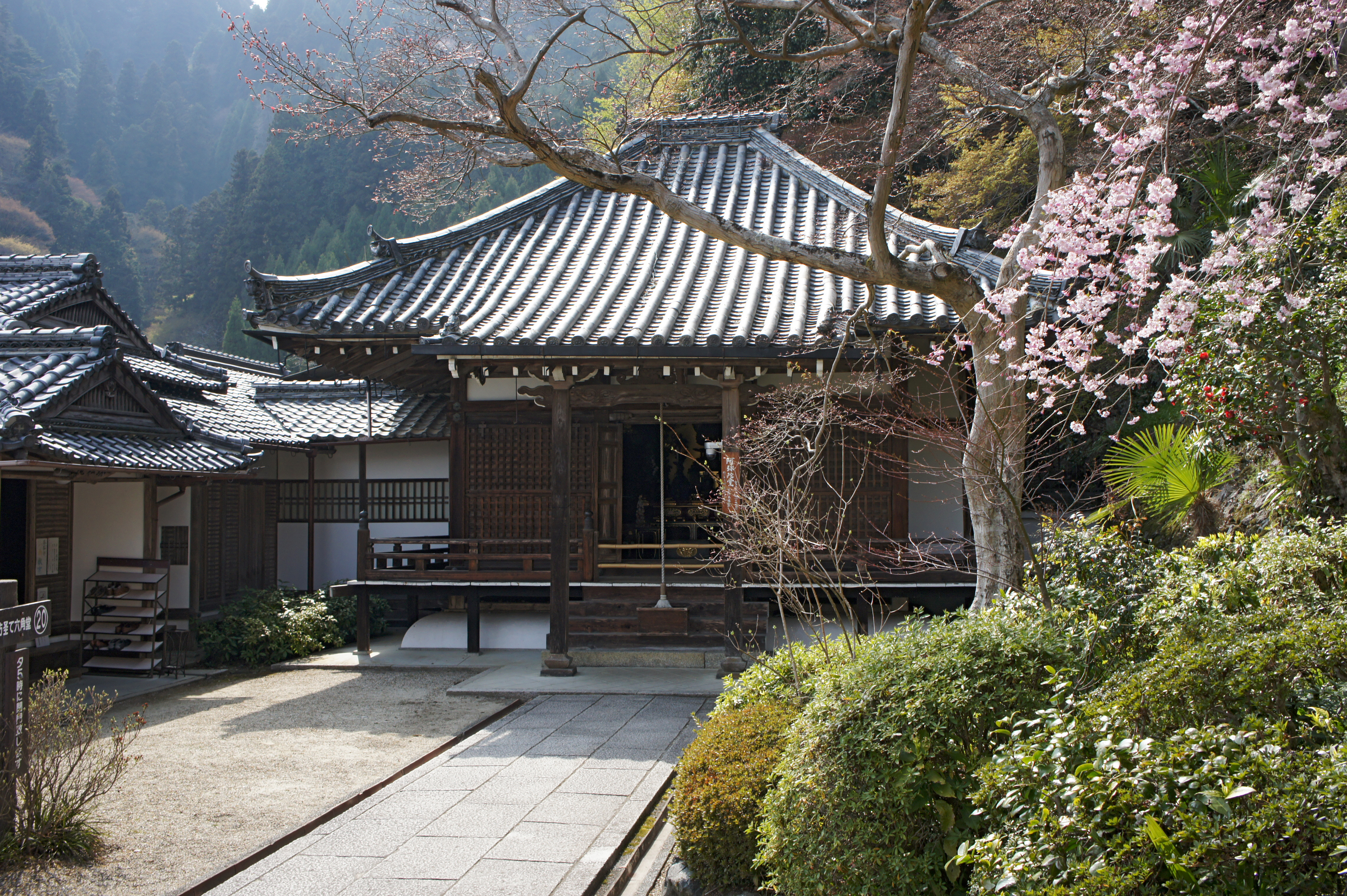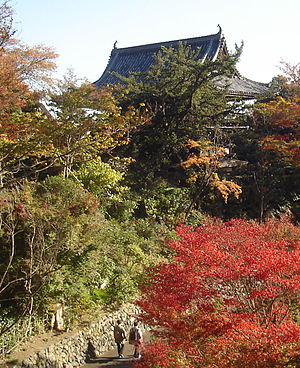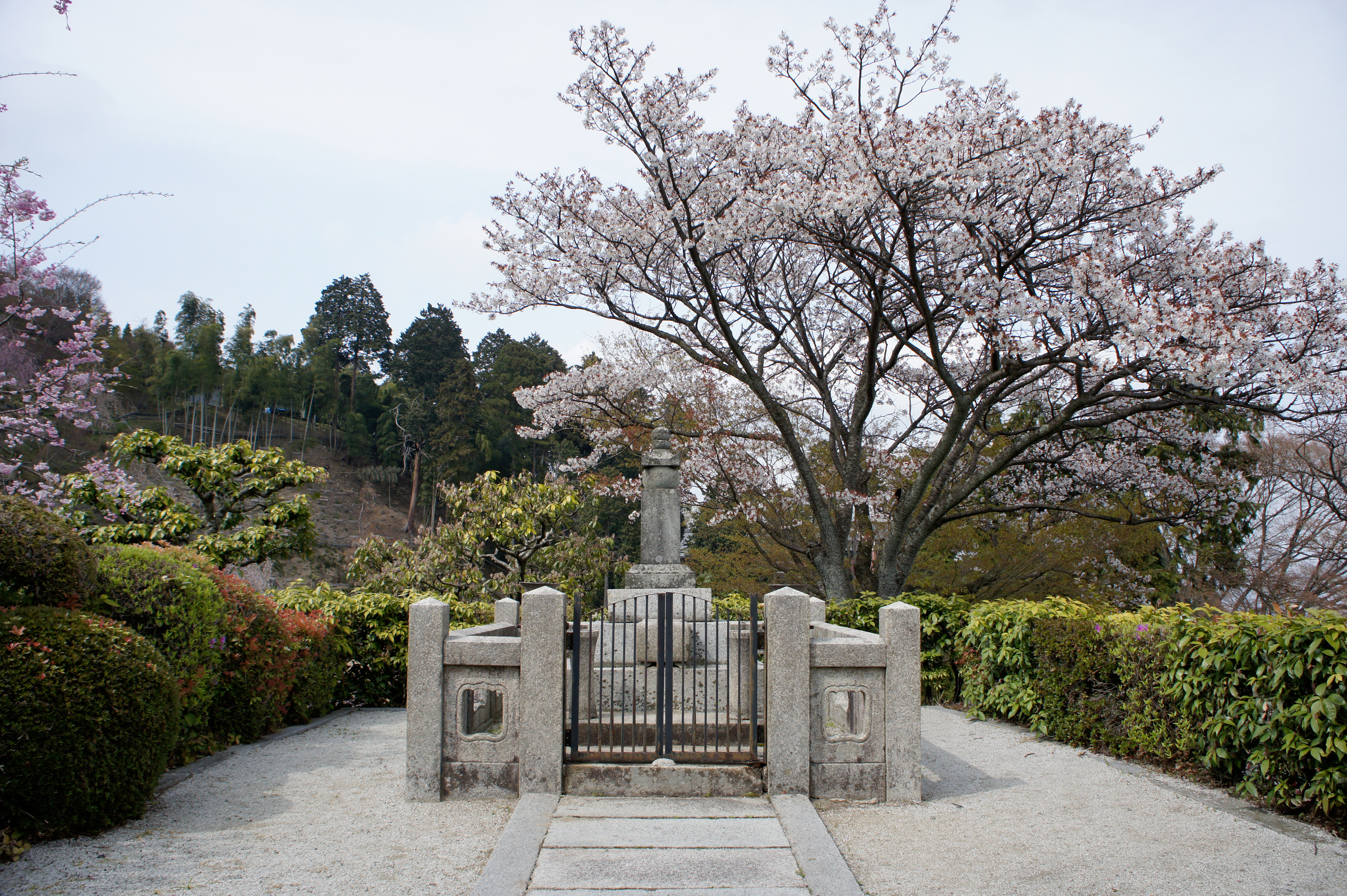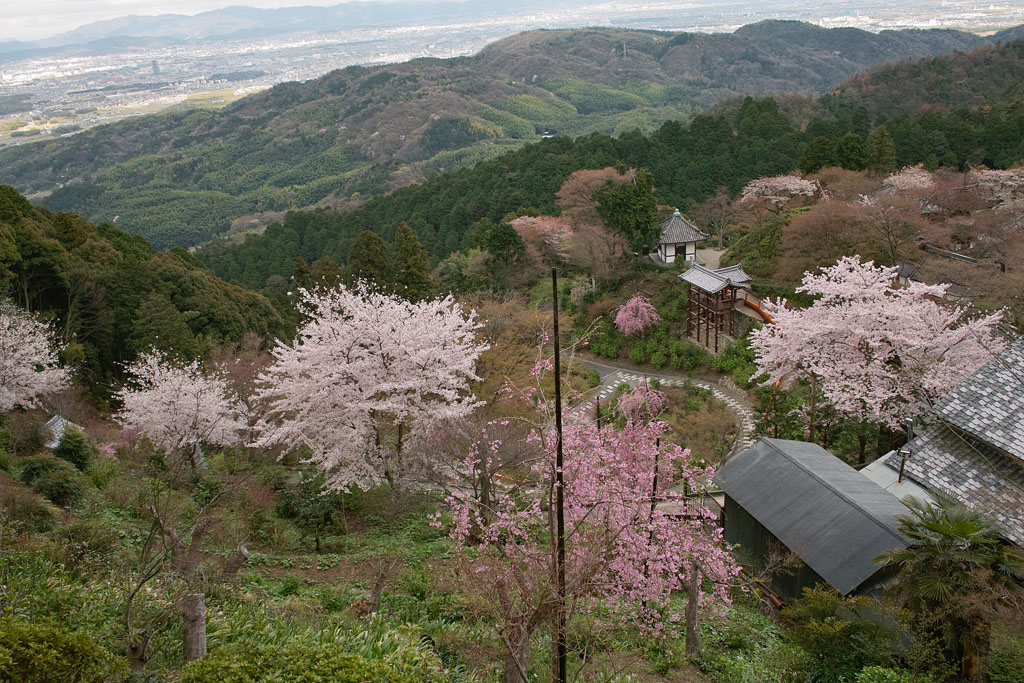
Kiyomizu-dera overlooks Kyoto from the East, with a magnificent view of the city below a sea of trees. It is close to the heart of Kyoto, easily accessible by bus, and is one of the top tourist spots. For those adverse to dealing with large crowds of tourists, try the much less well known but equally beautiful Yoshimine-dera (善峯寺) in the West. It is a temple complex dedicated to Kannon, the Goddess of Mercy, and has many interesting buildings dotting the hillside.

Yoshiminedera sanmon
It is especially noted for the fall colors which are usually at their peak in mid to late November. The paths connecting the buildings make a lovely walk, though are not as accessible for those with impaired mobility. Along with a good view of Kyoto below, there are some historical trees of interest. The most notable is a 600 year old pine which is 40 meters wide (about 131 feet) but only 2 meters tall (about 6 1/2 feet).

Yoshimine-dera was built as the personal retreat of the priest Gesan in 1029. Like much of Kyoto, it was destroyed in the Onin War in 1468, but rebuilt in 1621. Now it is part of the Tendai sect of Buddhism.

Yoshimine-dera Temple view from top (photo: double-h/flickr)
It is open from 8 am to 5 pm with a last admission at 4:30 pm. It costs 500 yen to enter. Because it is outside the city center, the easiest access from Kyoto Station is to take either the JR Kyoto line to Mukumachi Station or the Hankyu Kyoto line to Higashimuko Station. From either of these, take the Hankyu Bus #66 to Yoshimine-dera. The bus ride takes about half an hour and runs once per hour. In January and February, the bus does not run the whole way to the temple; the last stop is about a 20 minute walk from it.
For information in English, a useful website is: http://www.japan-guide.com/e/e3947.html
